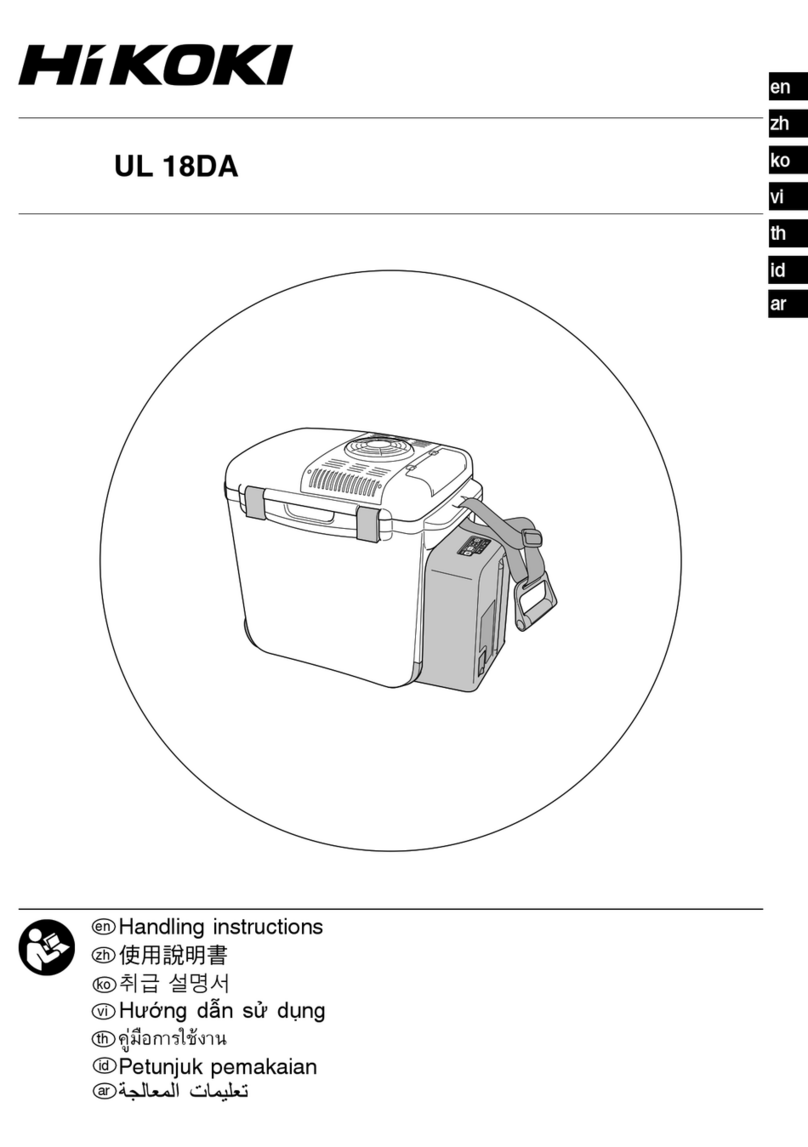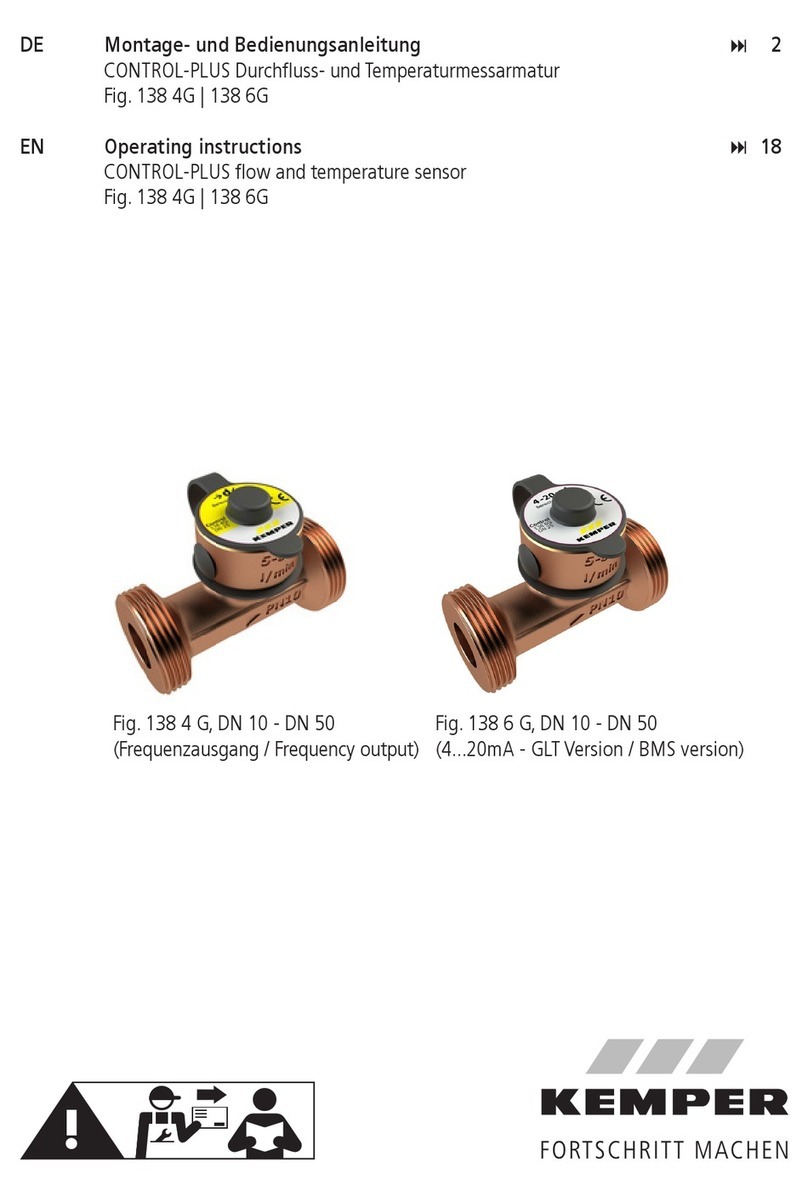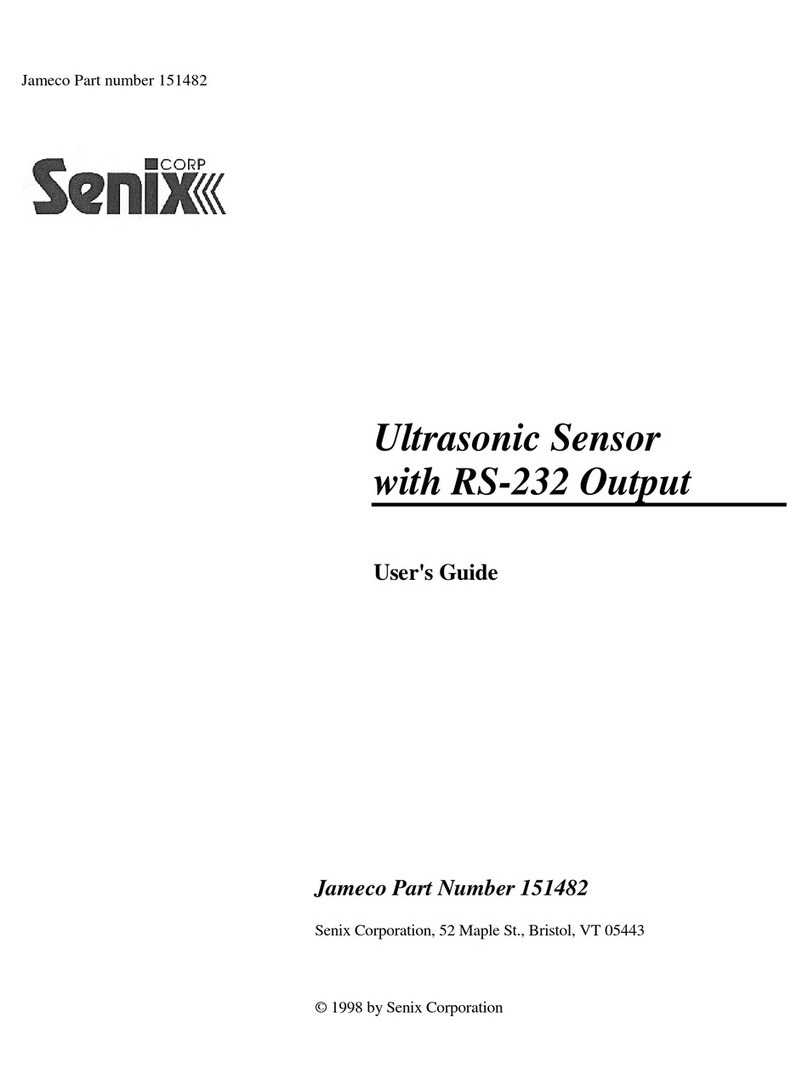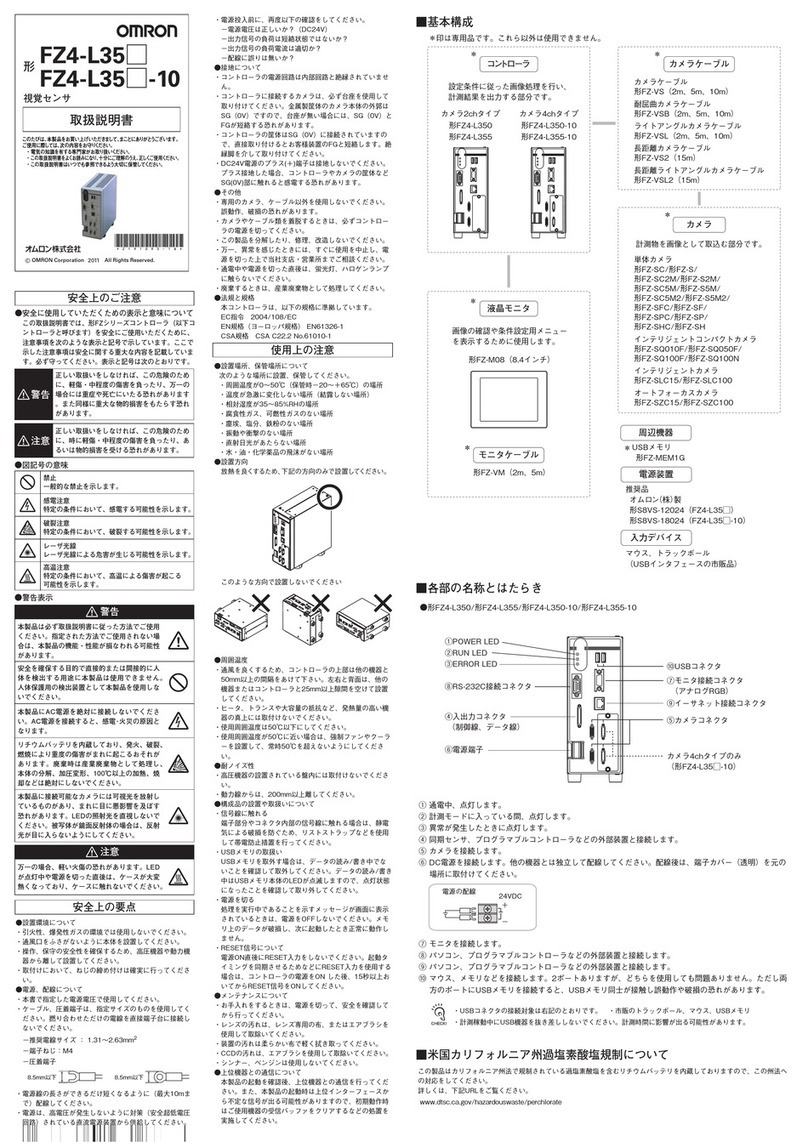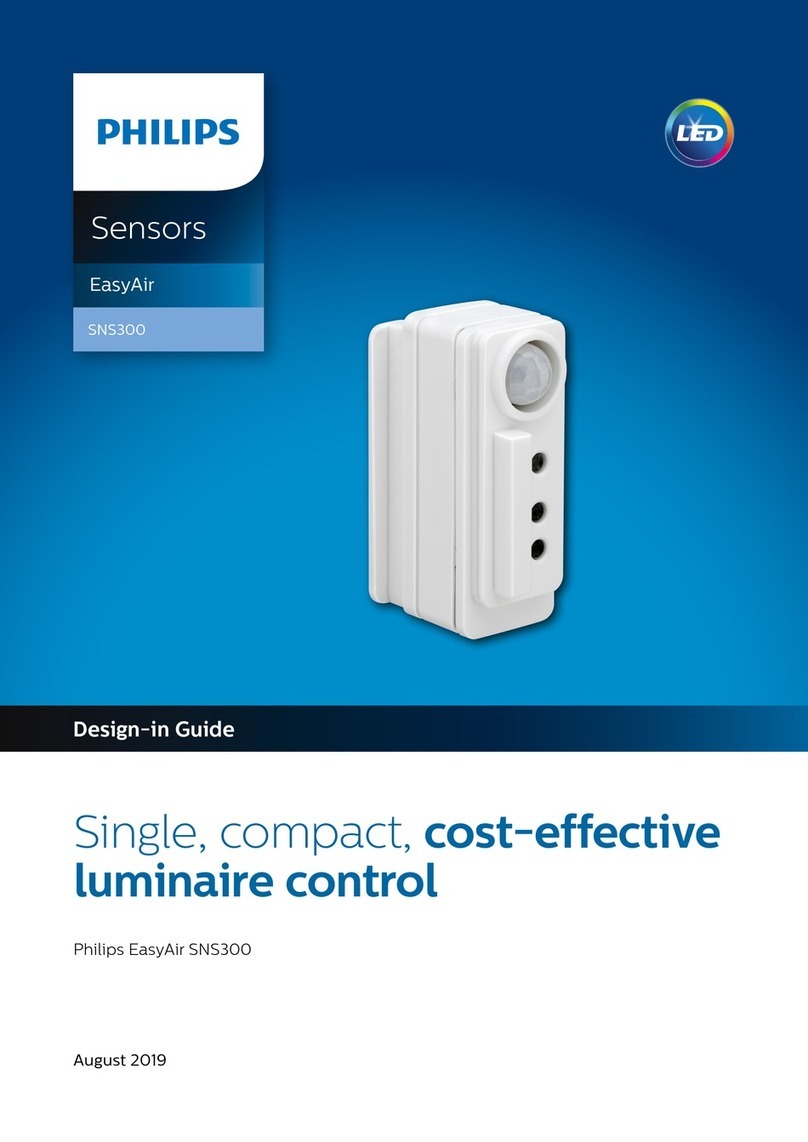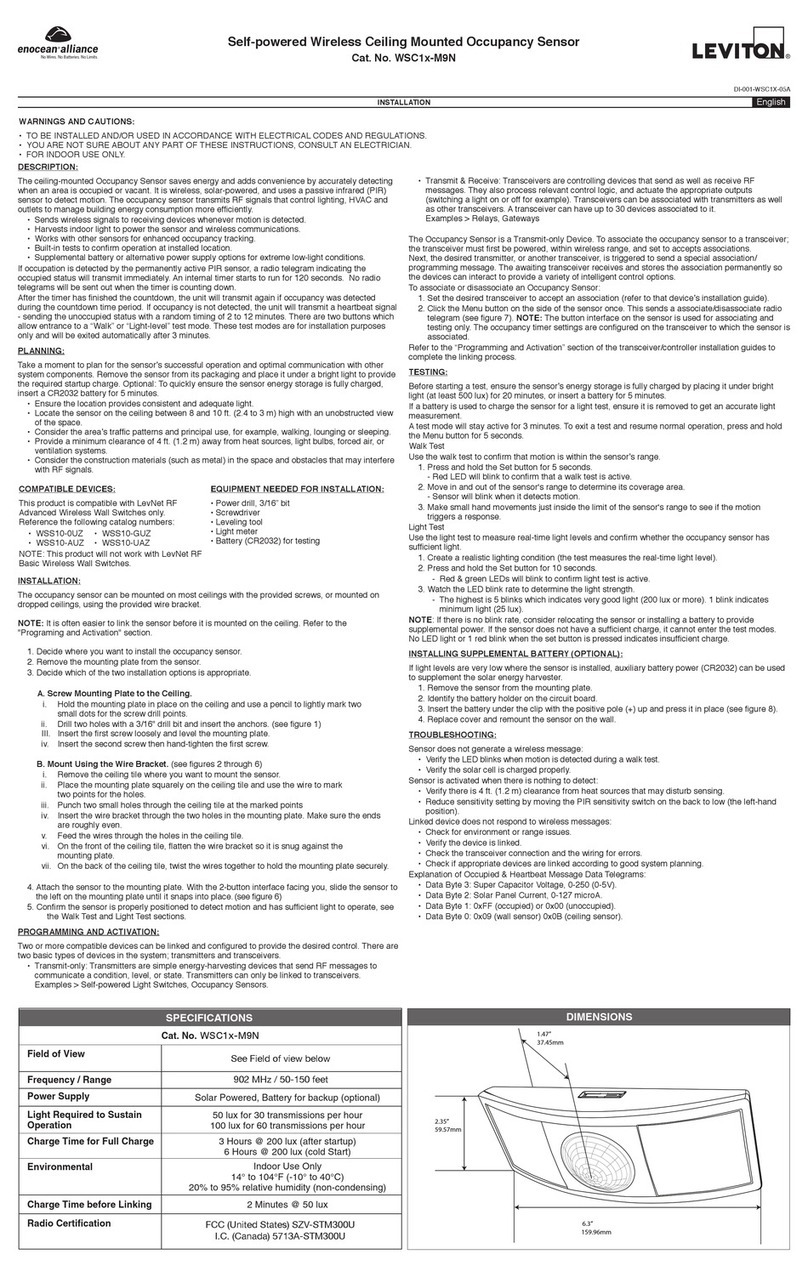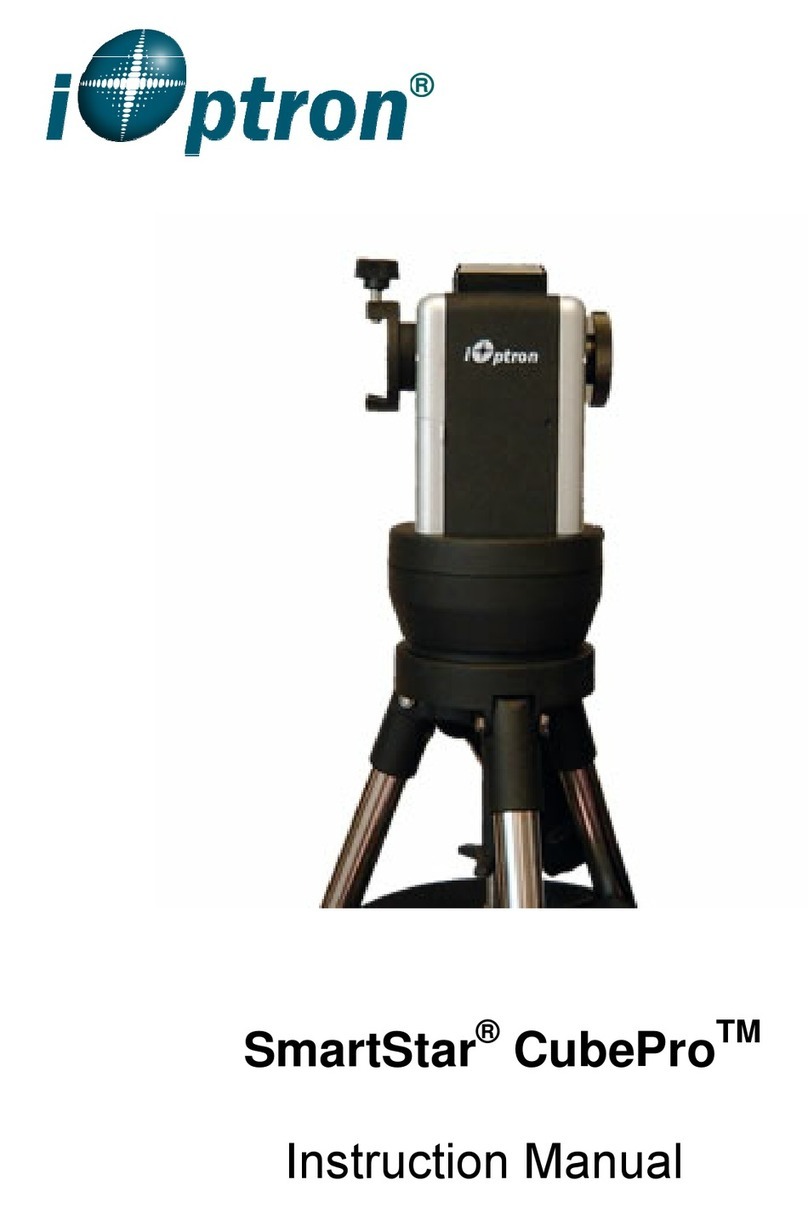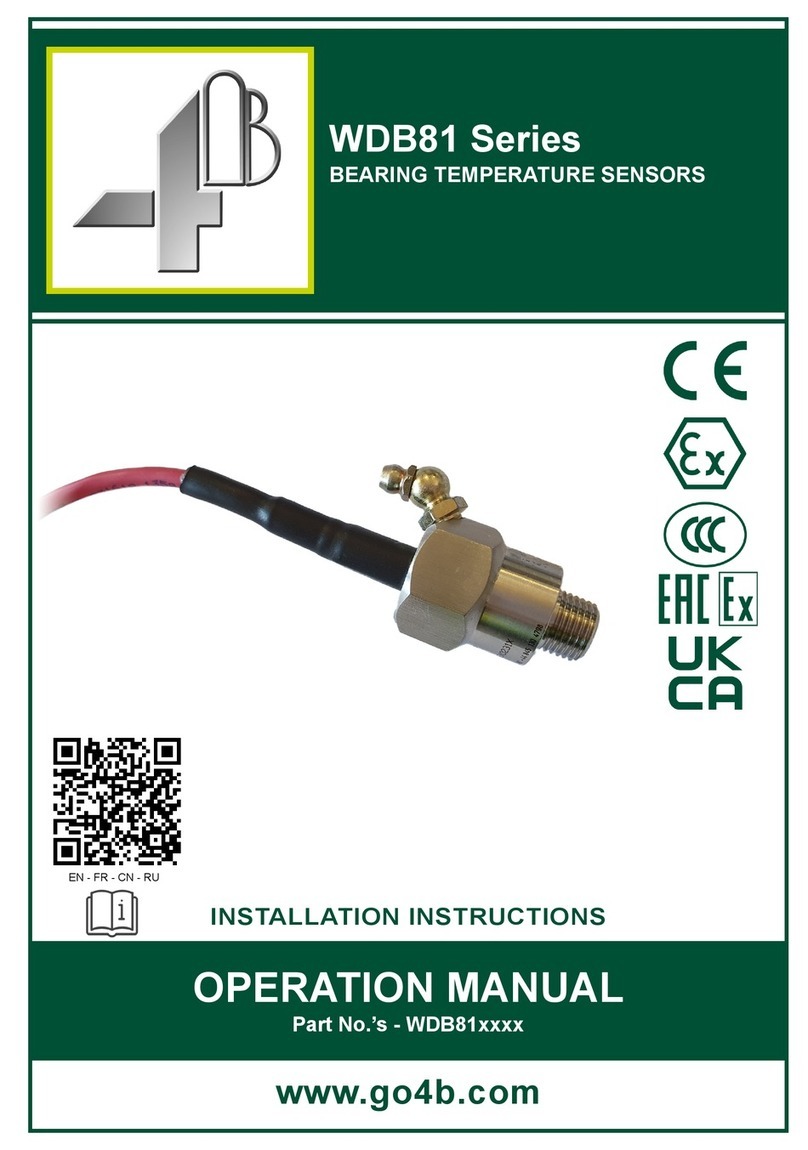Circutor ReadWatt User manual

INSTRUCTION MANUAL
(M018B01-03-22A)
Impulse sensor
ReadWatt

2
ReadWatt
Instruction Manual

SAFETY PRECAUTIONS
DISCLAIMER
CIRCUTOR, SA reserves the right to make modifications to the device or the unit specifications set
out in this instruction manual without prior notice.
CIRCUTOR, SA on its web site, supplies its customers with the latest versions of the device specifica-
tions and the most updated manuals.
www.circutor.com
CIRCUTOR, recommends using the original cables and accessories that are supplied
with the device.
DANGER
Warns of a risk, which could result in personal injury or material damage.
ATTENTION
Indicates that special attention should be paid to a specific point.
Follow the warnings described in this manual with the symbols shown below.
If you must handle the unit for its installation, start-up or maintenance, the following should be
taken into consideration:
Incorrect handling or installation of the unit may result in injury to personnel as well as damage to the
unit. In particular, handling with voltages applied may result in electric shock, which may cause death
or serious injury to personnel. Defective installation or maintenance may also lead to the risk of fire.
Read the manual carefully prior to connecting the unit. Follow all installation and maintenance in-
structions throughout the unit’s working life. Pay special attention to the installation standards of the
National Electrical Code.
Refer to the instruction manual before using the unit
In this manual, if the instructions marked with this symbol are not respected or carried out correctly, it can result
in injury or damage to the unit and/or installations.
CIRCUTOR, SA reserves the right to modify features or the product manual without prior notification.
3
Instruction Manual
ReadWatt

CONTENTS
SAFETY PRECAUTIONS .........................................................................................................................................................3
DISCLAIMER ..........................................................................................................................................................................3
CONTENTS.............................................................................................................................................................................4
REVISION LOG .......................................................................................................................................................................5
SYMBOLS...............................................................................................................................................................................5
1. VERIFICATION UPON RECEPTION....................................................................................................................................6
2. PRODUCT DESCRIPTION .................................................................................................................................................6
3. DEVICE INSTALLATION....................................................................................................................................................7
3.1.- PRIOR RECOMMENDATIONS ....................................................................................................................................7
3.2.- INSTALLATION .........................................................................................................................................................8
3.3.- DEVICE TERMINALS...............................................................................................................................................10
3.4.- CONNECTION DIAGRAM..........................................................................................................................................11
3.4.1.- RS-485 CONNECTION ....................................................................................................................................11
3.4.2.- PULSE OUTPUT CONNECTION ...................................................................................................................... 12
4. OPERATION ................................................................................................................................................................... 13
4.1.- IMPULSE LED........................................................................................................................................................ 13
4.2.- IMPULSE OUTPUT ................................................................................................................................................. 13
4.3- COMMUNICATIONS ................................................................................................................................................. 14
4.3.1.- MODBUS PROTOCOL...................................................................................................................................... 14
4.3.2.- READ COMMANDS ........................................................................................................................................ 14
4.3.3.- WRITE COMMANDS....................................................................................................................................... 15
4.3.4.- MODBUS VARIABLES .................................................................................................................................... 15
4.3.5.- SPECIAL BROADCAST COMMAND................................................................................................................. 16
5. TECHNICAL FEATURES..................................................................................................................................................18
6. MAINTENANCE AND TECHNICAL SERVICE .................................................................................................................. 20
7. GUARANTEE.................................................................................................................................................................. 20
8. CE CERTIFICATE ............................................................................................................................................................ 21
4
ReadWatt
Instruction Manual

REVISION LOG
Table 1: Revision log.
Date Revision Description
03/14 M018B01-03-14A Initial Version
04/14 M018B01-03-14B Changes in the following sections:
3.4,- 4.3.4 - 5
06/14 M018B01-03-14C Changes in the following sections:
4.3.4
10/18 M018B01-03-18A Changes in the following sections:
1.- 8.
01/22 M018B01-03-22A Changes in the following sections:
3.3.- 4.3.4.- 4.3.5.
Note: The images of the devices are solely for the purpose of illustration and may differ from the orig-
inal device.
SYMBOLS
Table 2: Symbols
Symbol Description
In compliance with the relevant European directive.
Device covered by European directive 2012/19/EC. At the end of its useful life, do not leave the
unit in a household waste container. Follow local regulations on electronic equipment recycling.
DC current
~AC current
5
Instruction Manual
ReadWatt

1.- VERIFICATION UPON RECEPTION
Check the following points when you receive the device:
a) The device meets the specifications described in your order.
b) The device has not suffered any damage during transport.
c) Perform an external visual inspection of the device prior to switching it on.
d) Check that it has been delivered with the following:
- A Velcro strap to attach the device to the energy meter with impulse emitter,
- A connection cable,
- An installation guide.
If any problem is noticed upon reception, immediately contact the transport com-
pany and/or CIRCUTOR's after-sales service.
2.- PRODUCT DESCRIPTION
ReadWatt is an impulse sensor that can be attached to an energy meter verification impulse emitter
so that, through a MODBUS RTU protocol, there is an energy totaliser with the same accuracy as the
meter itself, but without physical access being necessary.
The unit features:
- 1 impulse indicator LED.
- 1 impulse output.
- RS-232 communications with MODBUS RTU protocol.
- RS-485 communications with MODBUS RTU protocol.
6
ReadWatt
Instruction Manual

3.- DEVICE INSTALLATION
3.1.- PRIOR RECOMMENDATIONS
In order to use the device safely, it is critical that individuals who handle it follow the
safety measures set out in the standards of the country where it is being used, use the
necessary personal protective equipment, and pay attention to the various warnings
indicated in this instruction manual.
The ReadWatt device must be installed by authorised and qualified staff.
The power supply plug must be disconnected before handling, altering the connections or replacing
the device. It is dangerous to handle the device while it is powered.
Also, it is critical to keep the cables in perfect condition in order to avoid accidents, personal injury and
damage to installations.
The manufacturer of the device is not responsible for any damage resulting from failure by the user
or installer to heed the warnings and/or recommendations set out in this manual, nor for damage
resulting from the use of non-original products or accessories or those made by other manufacturers.
If an anomaly or malfunction is detected in the device, do not use it to take any measurements.
Inspect the work area before taking any measurements. Do not take measurements in dangerous ar-
eas or where there is a risk of explosion.
Disconnect the device from the power supply (device and measuring system power
supply) before maintaining, repairing or handling the unit's connections.
Please contact the after-sales service if you suspect that there is an operational fault
in the device.
The installation where the device is connected must have an earthing and the DC ripple
voltage of the power supply cannot exceed 10%.
7
Instruction Manual
ReadWatt

3.2.- INSTALLATION
The device is installed on the energy meter.
The first step for installing ReadWatt is to separate the two parts of the Velcro strap.Take one of them,
remove the protective paper and stick the adhesive part of the Velcro strap to the rear of the device (
Figure 1).
Figure 1: Stick part of the Velcro strap to the rear of the READWATT.
Remove the protective paper from the other part of the Velcro strap and stick the adhesive part to the
optical port of the billing meter (Figure 2).
Figure 2: Stick a part of the Velcro strap to the optical port of the meter.
8
ReadWatt
Instruction Manual

Now simply place the ReadWatt on the energy meter's Velcro strap (Figure 3).
Figure 3: ReadWatt installed.
Finally, connect the cable delivered with the device to the ReadWatt's RJ45 connector.
Figure 4: Cable connection.
9
Instruction Manual
ReadWatt

3.3.- DEVICE TERMINALS
The device has a RJ45 connector with the following list of terminals (Table 3):
Table 3:List of ReadWatt terminals.
Terminal Description Wire color
1 GND, Auxiliary power supply. Brown
2 Rx, RS-232 Blue
3Tx, RS-232 Yellow
4 A(+), RS-485 Green
5 B(-), RS-485 Gray
6 GND, Pulse output Orange
7Pulse output Black
8Vdc, Auxiliary power supply. Red
Figure 5: ReadWatt RJ45 Connector.
Note: The device has a auxiliary power supply included:
Table 4:List of ReadWatt terminals.
Description Wire color
Auxiliary power supply + Black with solid gray line
Auxiliary power supply - Black
10
ReadWatt
Instruction Manual

3.4.- CONNECTION DIAGRAM
3.4.1.- RS-485 CONNECTION
Use an intelligent RS-232 to RS-485 network protocol converter to establish the communications with
the master device (Figure 6).
B(-)A(+)
A(+)
B(-)
Alimentación
Power Supply
ReadWatt
RS-232 / USB / Ethernet / Profibus ...
PC
RS-485
RS-485
RS-232
USB
Ethernet
Profibus
...
Figure 6: RS-485 Connection diagram.
11
Instruction Manual
ReadWatt

3.4.2.- PULSE OUTPUT CONNECTION
+VCC
7
6
IN
7
6
COMMON
+VCC
R
A
B
Figure 7: Pulse Output connection.
12
ReadWatt
Instruction Manual

4.- OPERATION
ReadWatt reads the light impulses from the meter, whose value is shown in real time on a MODBUS
parameter, which can be queried by another application.
The device reads kWh consumed or generated and totalizes them in the MODBUS meter, which works
incrementally, being able to generate, for example, a load curve in external software.
4.1.- IMPULSE LED
The device has an impulse LED with the same rate as the LED on which impulses are captured. This
safeguards the functionality of the meter's LED.
This LED has the same metrological validity as the meter's LED.
LED
Figure 8:Readwatt LED indicators
During start-up, the LED indicates the speed of the communication bus, by emitting 1, 2 or 3 light im-
pulses, see Table 3.
Table 5: Communication bus speed.
No. of pulses Speed
19600 bauds
219200 bauds
338400 bauds
4.2.- IMPULSE OUTPUT
The device has a transistor output (terminal no. 7in Table 3) to activate PLC or similar inputs.
Through MODBUS it is possible to configure the impulse width and ratio between output impulses and
impulses read from the energy meter verification LED.
13
Instruction Manual
ReadWatt

4.3- COMMUNICATIONS
ReadWatt has two communications ports, RS-232 and RS-485. Both ports can be used simultaneously.
The transmission speed, Baudrate, is the same for both ports and can be configured.
4.3.1.- MODBUS PROTOCOL
The MODBUS protocol is a communication standard in the industry that enables the network
connection of multiple devices, where there is a master and multiple slaves. Within the MODBUS
protocol ReadWatt uses the RTU (Remote Terminal Unit) mode.
In RTU mode the start and end of the message is detected with silences with a minimum of 3.5
characters and the 16-bit CRC error detection method is used.
The MODBUS functions implemented in the device are:
Functions 03 and 04. Reading of registers.
Function 10. Writing of multiple registers.
4.3.2.- READ COMMANDS
ReadWatt supports the integer type read functions: 0x03 and 0x04.
The device's MODBUS variables are specified in Table 6.
Example: Reading of the device's serial number with peripheral number 01.
We will send the following MODBUS frame:
Address Function Initial
Register Register no. CRC
01 04 0060 0002 CRC
The device will respond to us with the next frame:
Address Function No. of bytes Serial no. CRC
01 04 04 XXXX XXXX CRC
Note: The values are shown in hexadecimal.
The number of requested logs must be the same as the size of the variable requested.
It is possible to read several consecutive addresses, if the request meets the correct format.
14
ReadWatt
Instruction Manual

4.3.3.- WRITE COMMANDS
ReadWatt supports the integer type write functions: 0x10.
The device's MODBUS variables are specified in Table 6.
Example: Changing the MODBUS address of peripheral 01 to the address 0x000A.
We will send the following MODBUS frame:
Address Function Initial
Register Register no. No. bytes Data CRC
01 10 0008 0001 02 000A CRC
The device will respond to us with the next frame:
Address Function Initial
Register Register no. CRC
01 10 0008 0001 CRC
Note: The values are shown in hexadecimal.
The number of logs to write must be the same as the size of the variable that is being accessed.
It is possible to write several consecutive addresses, if the request meets the correct format.
4.3.4.- MODBUS VARIABLES
Table 6: Readwatt MODBUS variables.
Description Address
(Hexadecimal) Size Read/Write Default value
Modbus Address 0x0008 16 bits Read/Write 10
Transmission speed
(Baudrate) 0x010C 16 bits
Read/Write
0: 9600
1:19200
2: 38400
0: 9600
Serial no. 0x0060 32-bit Read -
firmware version 0x0050 3 x16 bits Read -
Maximum width of impulses in ms 0x0106 16 bits Read/Write 250 ms
Minimum width of impulses in ms 0x0107 16 bits Read/Write 2 ms
Weight count value per output impulse 0x0108 16 bits Read/Write 10
Relationship between optical impulses
and counting register 0x0109 16 bits Read/Write 1000
Transformation ratio(1) 0x010A 16 bits Read/Write 1
Output impulse width in ms 0x010B 16 bits Read/Write 100 ms
Instantaneous values
Impulse register 0x0600 64 bits Read -
Counting register 0x0604 64 bits Read -
Counting register 0x07D0 64 bits Read/Write -
15
Instruction Manual
ReadWatt

(1)Transformation ratio:
The pulses generated by a billing meter are always associated to the secondary, so that the Conversion
Ratio (Transformation Ratio) must be programmed in the case of Medium Voltage installations for
transferring the secondary pulses to the real primary measurement.
Example:
Low Voltage Installation:
Forward voltage: 1/1 -- Transformation ratio = 1.
Medium Voltage Installation:
Transformation ratio = X
In a Medium Voltage installation, where:
Voltage Primary = 27500 V, Voltage Secondary = 110 V.
Current Primary = 200 A, Current Secondary= 5 A.
Transformation ratio = 10000.
4.3.5.- SPECIAL BROADCAST COMMAND
In case the peripheral number assigned to the ReadWatt device is unknown, you have the broadcast
command available (address 00). With this command you can change certain basic parameters, such
as the MODBUS peripheral number or communication speed.
For this you need to know the serial number of the device you wish to access.
The serial number is on the front panel of the device (Figure 9); this number must be translated into
hexadecimal language so that it can be sent in the broadcast command.
Serie no
( in decimal)
Figure 9: ReadWatt serial no.
It is important to remember that because it is a broadcast frame, there is no confirmation reply.
Voltage Primary
Voltage Secondary
Current Primary
Current Secondary
16
ReadWatt
Instruction Manual

The broadcast command has the following structure:
Address Function Initial
Register Register no. No. bytes Unit serial no. Data CRC
00 10 0BBA 0003 06 SSSS SSSS DDDD CRC
Note: The serial number must be hexadecimal.
The MODBUS variables for the broadcast command are specified in Table 7.
Table 7: MODBUS variables, broadcast command.
Description Address
(Hexadecimal) Size Read/Write
Serial no. 0x0BB8 32 bits Read
Peripheral no. (Top part)
Baudrate transmission speed (Bottom part) 0x0BBA 16 bits
Write
Top Part:
01..FF
Bottom Part:
00: 9600 bps
01:19200 bps
02: 38400 bps
17
Instruction Manual
ReadWatt

5.- TECHNICAL FEATURES
Power supply
Rated voltage 5 V ... 24 V
Tolerance ± 5%
Consumption < 0.5 W
Memory
Setup, logs EEPROM and FRAM type non-volatile memory
User interface
LED 1 LED
Impulse output
Quantity 1
Type Open collector
Maximum voltage 24 V
Maximum current 50 mA
Maximum frequency 100 impulses/sec.
Pulse width 2 ms to 250 ms (Programmable)
RS-232 and RS-485 communications
Communications protocol Modbus
Baud Rate 9600 -19200-38400
No. of bits 8
Stop bits 1
Parity without
Insulation
Alternating voltage 4kV RMS 50Hz during 1 minute
Overimpulse
1.2/50ms 0Ω source impedance 6 kV at 60º and 240º, with positive and negative polarization
Environmental features
Operating temperature -15ºC ... +55ºC
Storage temperature -25ºC ... +65ºC
Relative humidity (non-condensing) 5 ... 95%
Maximum altitude 2000 m
Mechanical features
Dimensions Figure 10
Enclosure Polyamide V0
Weight 14 g.
Protection degree IP 41
Standards
Electromagnetic compatibility (EMC) -- Part 6-2: Generic standards - Immunity
for industrial environments. UNE EN-61000-6-2
Electromagnetic compatibility (EMC) -- Part 6-4: Generic standards - Emission
standard for industrial environments UNE EN-61000-6-4
18
ReadWatt
Instruction Manual

32.15
25.6
Figure 10: ReadWatt dimensions
19
Instruction Manual
ReadWatt

6.- MAINTENANCE AND TECHNICAL SERVICE
7.- GUARANTEE
• No returns will be accepted and no unit will be repaired or replaced if it is not accom-
panied by a report indicating the defect detected or the reason for the return.
•The guarantee will be void if the units has been improperly used or the storage, instal-
lation and maintenance instructions listed in this manual have not been followed. “Im-
proper usage” is defined as any operating or storage condition contrary to the national
electrical code or that surpasses the limits indicated in the technical and environmental
features of this manual.
•CIRCUTOR accepts no liability due to the possible damage to the unit or other parts of
the installation, nor will it cover any possible sanctions derived from a possible failure,
improper installation or “improper usage” of the unit. Consequently, this guarantee does
not apply to failures occurring in the following cases:
- Overvoltages and/or electrical disturbances in the supply;
- Water, if the product does not have the appropriate IP classification;
- Poor ventilation and/or excessive temperatures;
- Improper installation and/or lack of maintenance;
- Buyer repairs or modifications without the manufacturer’s authorisation.
CIRCUTOR
guarantees its products against any manufacturing defect for two years after the delivery
of the units.
CIRCUTOR will repair or replace any defective factory product returned during the guarantee period.
In the case of any query in relation to device operation or malfunction, please contact the
CIRCUTOR,
SA Technical Support Service.
Technical Assistance Service
Vial Sant Jordi, s/n, 08232 - Viladecavalls (Barcelona)
Tel: 902 449 459 ( España)/+34 937 452 919 (outside of Spain)
email: sat@circutor.com
The device does not need any type of maintenance.
20
ReadWatt
Instruction Manual
Table of contents
Popular Accessories manuals by other brands

Krell Industries
Krell Industries 800 Series Owner's reference
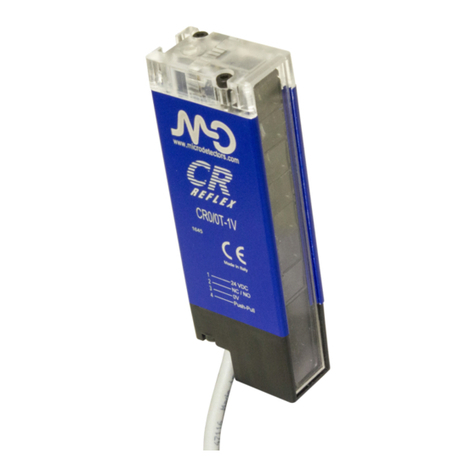
Micro Detectors
Micro Detectors CR0 Series Installation and operation manual
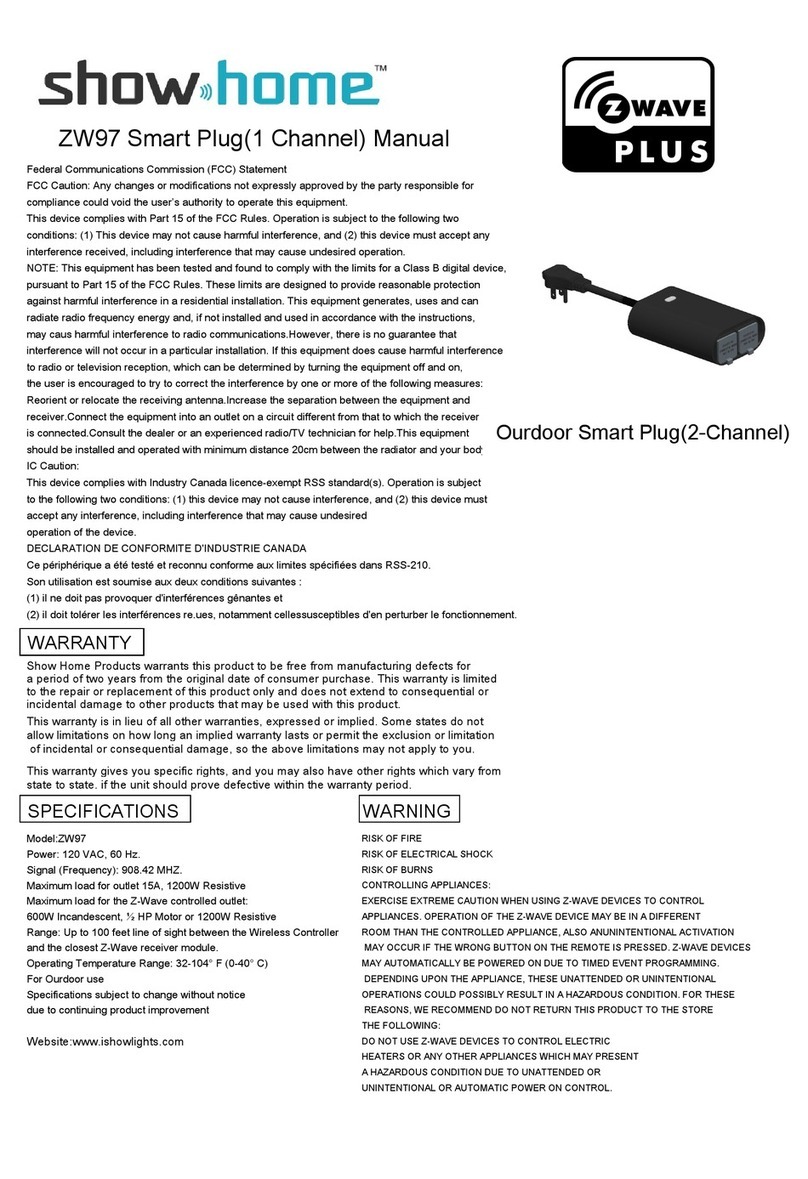
showhome
showhome ZW97 manual
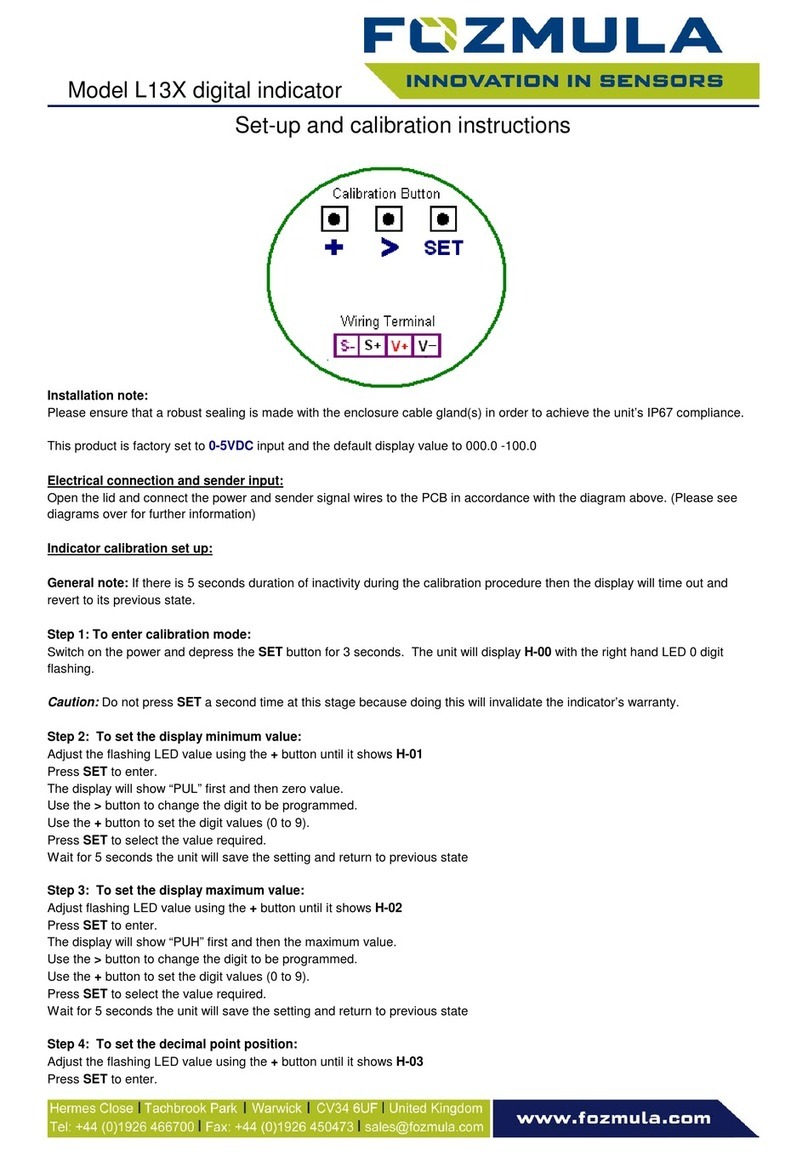
Fozmula
Fozmula L13X Calibration instructions
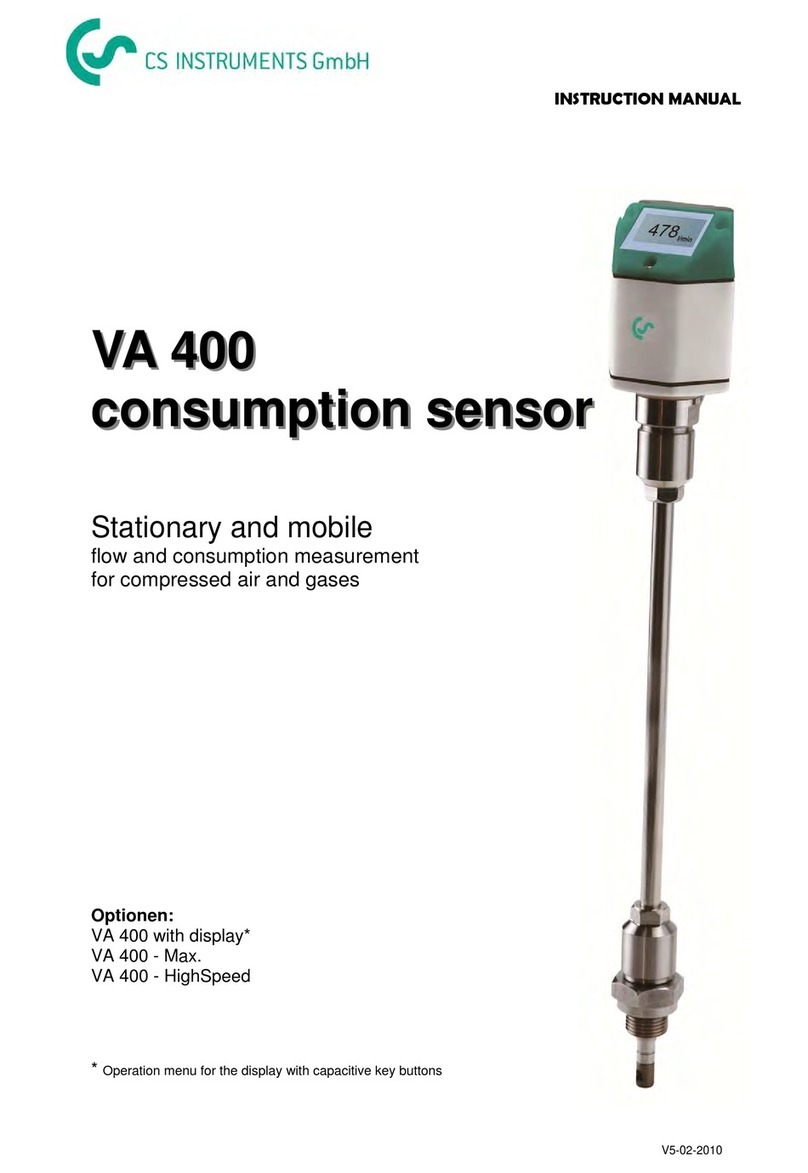
CS Instruments
CS Instruments VA 400 instruction manual
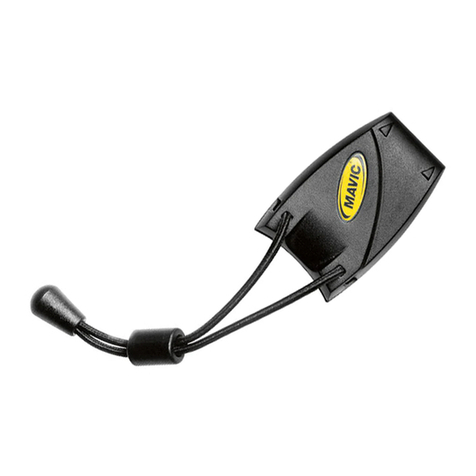
Mavic
Mavic Wintech USB quick start guide

